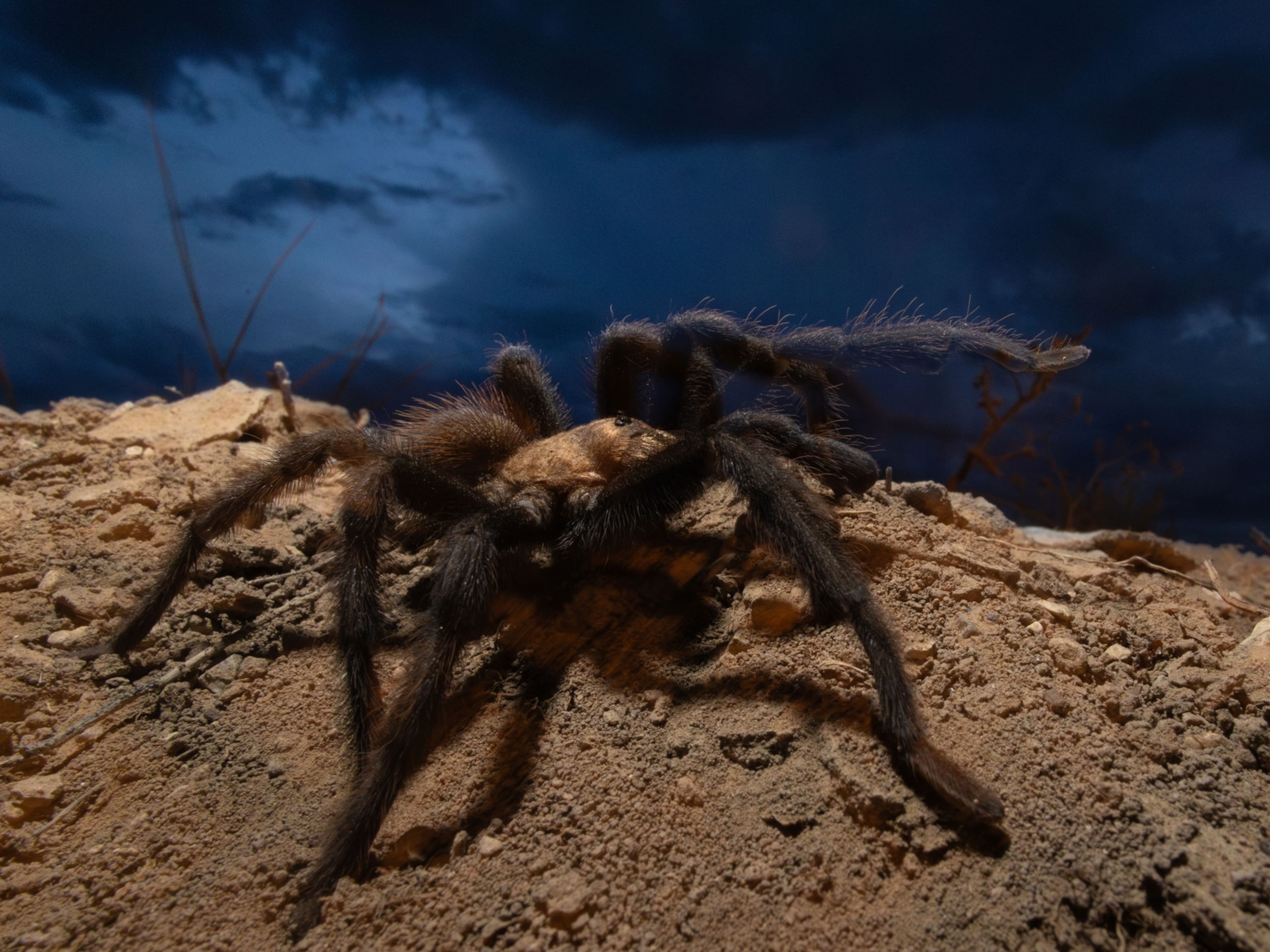Watch a Tarantula Crawl Out of Its Own Skeleton
A time-lapse video shows what happens when a young Mexican Red Knee tarantula is ready to shed its old exoskeleton.
Watching a tarantula move can make a person's skin crawl -- especially when the arachnid is crawling out of its own skin.
More accurately, tarantulas have what's known as an exoskeleton, the stiff outer structure housing the spider's internal organs similar to how human skin protects internal organs. To grow larger, tarantulas must form a new exoskeleton and shed their previous, smaller coverings in a process called molting.
This time-lapse video shows a female Mexican Red Knee tarantula molting, an event that takes more than three hours but that is compressed here into a minute. To wriggle out of its old exoskeleton, the spider lies on its side and slowly pulls out its legs, like someone peeling off a tight pair of jeans.
Both male and female tarantulas molt several times until they reach their full size. Mature Mexican Red Knee tarantulas typically get to be four to five inches in body size, with a leg span of six to seven inches.
Depending on the external conditions such as temperature or humidity, males can reach maturity within three to seven years, and they typically live for only one year after their last molt. Females, however, reach maturity in four to ten years and then can live to be as old as 25.
This tarantula is a juvenile, according to its owner Jason Bauer, who shot the video footage. That means it will molt several more times in its life.
During the molting process, tarantulas contract their abdomens, which pushes fluid into the upper body, or cephalothorax. The fluid increases the pressure already on the strained exoskeleton, allowing the tarantula to break through its weak spots.
Andrine Shufran from Oklahoma State University's Department of Entomology put it more simply:
"She essentially pops off the top of her head and pulls her body out."
Shufran noted that, after molting, the spider's new skin is soft, making it more vulnerable to predation. The new exoskeleton generally hardens after about an hour or week, depending on the species.
Before Bauer's tarantula molted, he observed it undergoing physical changes. The bald spot on its abdomen grew larger, and the skin just visible underneath turned from pink to nearly black. The dark coloring is a result of the fresh exoskeleton forming underneath, which can be seen after the spider's molt.
Tarantula eating habits also change drastically before molting.
"She literally had her mouth submerged [in water] for four hours, and I had to fill her bowl up some more," Bauer says.
The tarantula eventually stopped eating altogether and was observed laying still for roughly two weeks before Bauer found it on its side molting.
According to Shufran, these are all normal behaviors that precede molting. Because tarantulas grow a new exoskeleton underneath their old one, they develop a lubricating layer between the two skeletons. During the molting process, everything from a tarantula's eyes to their fangs becomes detached from their old skeleton, and they often cease eating in the weeks prior to prevent getting stuck in their old shell.
"Tarantulas that get stuck while molting nearly always die," said Shufran.
Many animals that shed their skin later eat their molt to regain energy lost during the molting process. Tarantulas, however, are covered in multiple, itchy hairs that are easily popped off and used for defense.
According to Bauer, his spider stayed next to its former shell for several days but never touched it.





